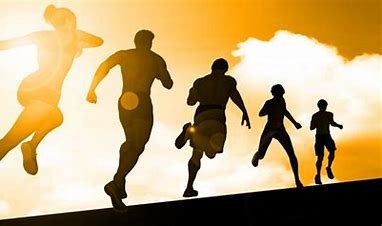
🏃♂️ Why Coordination Is Vital in Athletic Performance
Coordination refers to the ability to execute smooth, accurate, and controlled physical movements. It involves the brain, muscles, and sensory systems working together seamlessly. In sports, where precise timing, quick reactions, and fluid movement patterns are key, coordination becomes a foundational skill that separates good athletes from great ones.
⚙️ 1. Enables Precise and Efficient Movements
Good coordination allows athletes to:
- Control their body movements with accuracy
- Execute complex skills (like dribbling in basketball, serving in tennis, or kicking a soccer ball mid-air)
- Minimize wasted motion, improving energy efficiency and endurance
Efficient movement means less effort is spent correcting errors, which enhances speed and stamina.
⚡ 2. Enhances Reaction Time and Reflexes
In most sports, athletes need to make split-second decisions—like dodging a tackle, returning a serve, or catching a fast-moving ball. Coordination sharpens:
- Eye-hand coordination (e.g., baseball, tennis, boxing)
- Eye-foot coordination (e.g., soccer, football, martial arts)
- Full-body responses to stimuli (e.g., reacting to an opponent’s move)
The better the coordination, the faster and more accurately an athlete can respond to changing game situations.
🎯 3. Improves Skill Execution and Performance Consistency
Highly coordinated athletes are better at:
- Learning new techniques quickly
- Executing movements with precision under pressure
- Repeating complex motor patterns with consistency
This helps athletes maintain peak performance even in high-stress environments, such as competition or fatigue.
🛡️ 4. Reduces Risk of Injury
Coordination helps the body move in aligned, balanced, and intentional ways, which:
- Protects joints and muscles from awkward or unsafe movements
- Improves balance and stability, preventing falls or sprains
- Increases body awareness, so athletes can adjust mid-movement to avoid collisions or poor landings
A coordinated athlete is more likely to move efficiently and safely, reducing the wear and tear on their body.
🧠 5. Sharpens Neuromuscular Control
Coordination training strengthens the connection between the nervous system and muscles. Over time, athletes develop:
- Better timing and rhythm
- Improved spatial awareness
- Faster motor learning
This results in fluid, automatic movements, even during complex plays or under fatigue.
🧩 How to Improve Coordination in Sports
Athletes and coaches can use various drills and tools to improve coordination:
- Agility ladders and cone drills
- Hand-eye coordination drills (juggling, catching, racquet sports)
- Balance and proprioception work (balance boards, single-leg tasks)
- Sport-specific movement patterns (shadowboxing, dribbling drills, etc.)
- Dual-task training (performing skills while solving a problem or reacting to a cue)
🏆 Conclusion: Coordination = Competitive Edge
In sports, coordination isn’t just about grace—it’s about control, speed, timing, and safety. Whether you’re sprinting, swinging, or scoring, improved coordination helps athletes reach their maximum potential, prevent injuries, and excel under pressure.
